This is a tourist attraction that I have passed too many times to remember, but only visited recently. I was pleasantly surprised by what greeted me inside, but a more accurate description would be that I was shocked it doesn’t receive the attention it truly deserves.
Shueili Snake Kiln Ceramics Cultural Park (水里蛇窯陶藝文化園區) in Nantou County’s Shueili Township (水里) was built in 1927 and is the oldest wood-fired kiln in Taiwan. Founded in 1927 by master potter Lin Chiang-sung (林江松) it remained a family business for generations before being opened to the public as a ceramics park in 1993. The 30-meter elongated kiln bears a resemblance to a snake, hence its name.
There were two reasons for founding a kiln in this location. First, in the early 20th century Shueili was home to a thriving timber industry providing an ample supply of wood to fire the kiln. Second, the local clay is ideal for pottery.
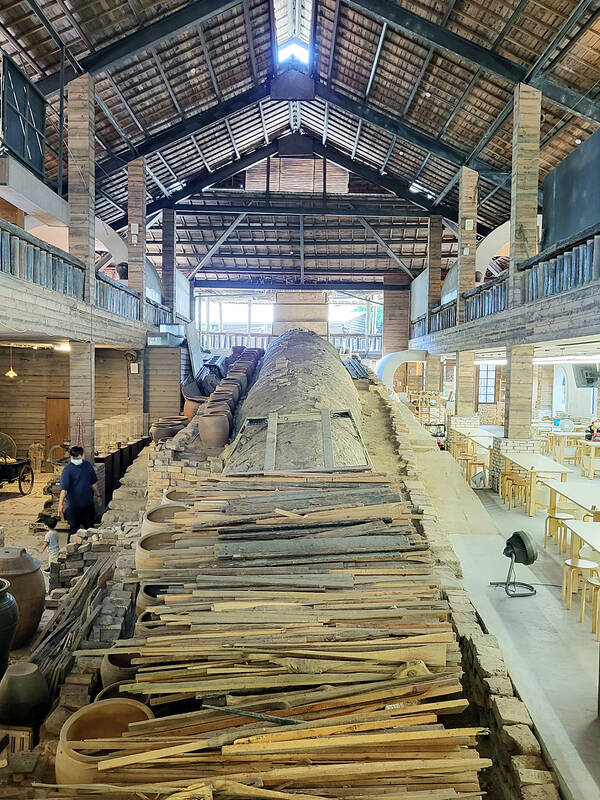
Photo courtesy of Mark Roche
After passing through the gateway the first thing that caught my eye was the three-story main building. It was like stepping into the Japanese colonial past. Ceramic jars line the outer walls of the wooden structure carved and assembled by artisans of a bygone era. Even more impressive is the fact that the whole complex had to be reconstructed from scratch.
RISING FROM THE RUBBLE
In 1999, the original kiln was completely destroyed by the catastrophic 921 Earthquake. The next year, it was fully restored and opened to the public. To celebrate its rebirth, potters created a 6.6-meter vase –—The Millenium Twin-lips Vase — certified as the tallest kiln work in the world by Guinness World Records.
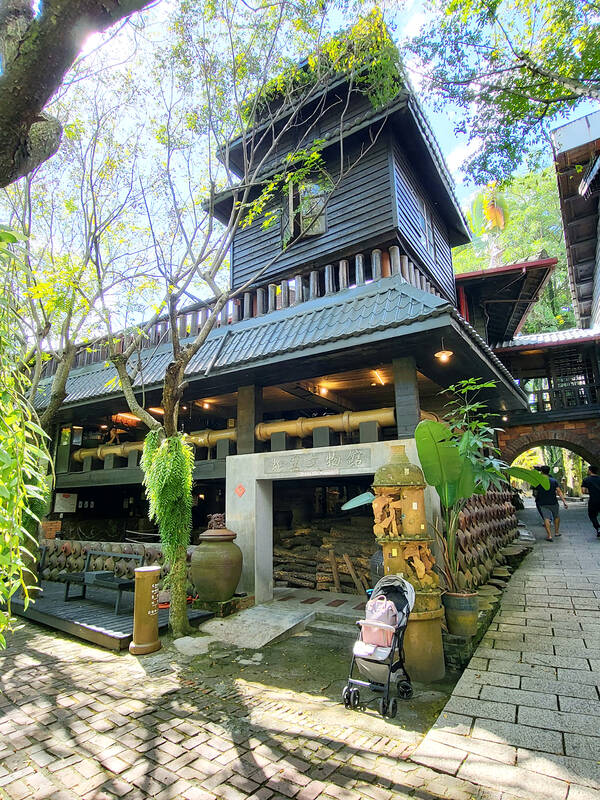
Photo courtesy of Mark Roche
Shueili Snake Kiln also successfully transformed itself into a cultural park, where the family-friendly, educational and interactive pottery classes allow visitors to experience traditional clay making.
LOST IN THE LABYRINTH
I stood inside the 30-meter Snake Kiln in awe of the effort required to stack and fire its contents. Watching artisans transform a lump of clay into objects of beauty gave me extra appreciation when wandering through the gallery spaces, where traditional forms and contemporary designs contrast with more playful work.
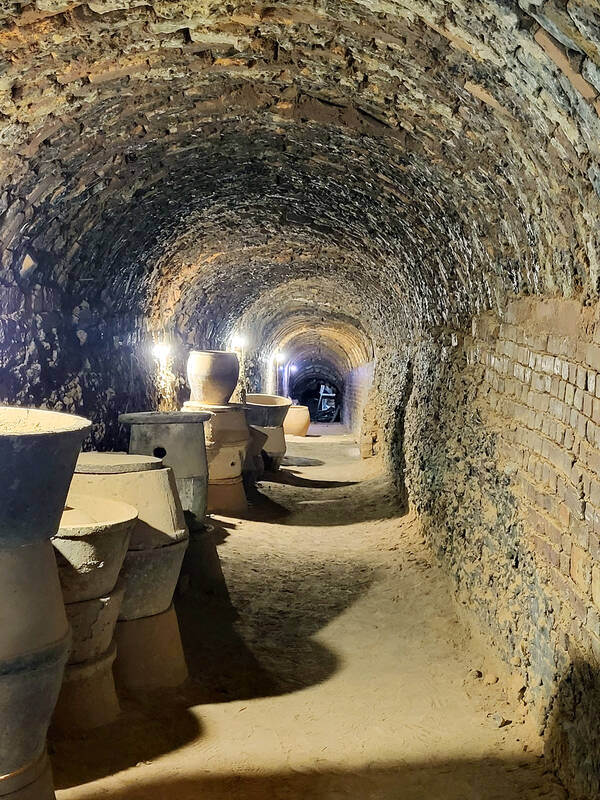
Photo courtesy of Mark Roche
Walking around the cultural park is a sheer joy. A maze of rooms, one leading into the other includes the Snake Kiln Museum, a multi-media room, an exhibition hall and a boutique shop to name a few. If you can find it without getting lost there is also a wonderful coffee shop on one of the upper floors.
I would advise the visitor to allow a few hours to cover all the areas inside. It would be a mistake to rush it if for no other reason than to just sit in the garden area and soak in the atmosphere of this temple dedicated to the art of ceramics.
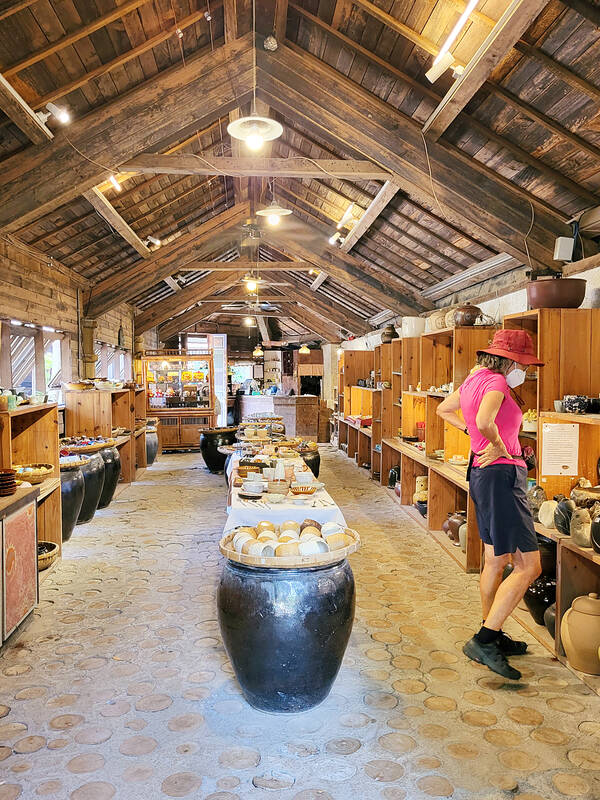
Photo courtesy of Mark Roche
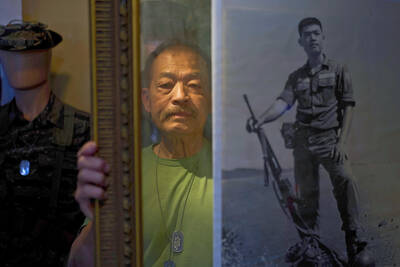
When the South Vietnamese capital of Saigon fell to the North Vietnamese forces 50 years ago this week, it prompted a mass exodus of some 2 million people — hundreds of thousands fleeing perilously on small boats across open water to escape the communist regime. Many ultimately settled in Southern California’s Orange County in an area now known as “Little Saigon,” not far from Marine Corps Base Camp Pendleton, where the first refugees were airlifted upon reaching the US. The diaspora now also has significant populations in Virginia, Texas and Washington state, as well as in countries including France and Australia.
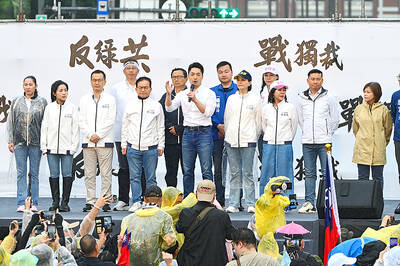
On April 17, Chinese Nationalist Party (KMT) Chairman Eric Chu (朱立倫) launched a bold campaign to revive and revitalize the KMT base by calling for an impromptu rally at the Taipei prosecutor’s offices to protest recent arrests of KMT recall campaigners over allegations of forgery and fraud involving signatures of dead voters. The protest had no time to apply for permits and was illegal, but that played into the sense of opposition grievance at alleged weaponization of the judiciary by the Democratic Progressive Party (DPP) to “annihilate” the opposition parties. Blamed for faltering recall campaigns and faced with a KMT chair
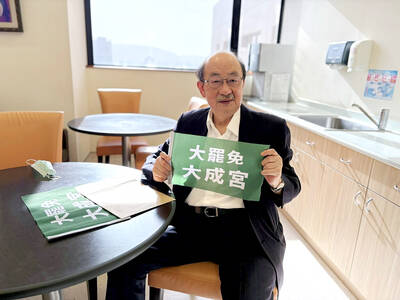
Article 2 of the Additional Articles of the Constitution of the Republic of China (中華民國憲法增修條文) stipulates that upon a vote of no confidence in the premier, the president can dissolve the legislature within 10 days. If the legislature is dissolved, a new legislative election must be held within 60 days, and the legislators’ terms will then be reckoned from that election. Two weeks ago Taipei Mayor Chiang Wan-an (蔣萬安) of the Chinese Nationalist Party (KMT) proposed that the legislature hold a vote of no confidence in the premier and dare the president to dissolve the legislature. The legislature is currently controlled
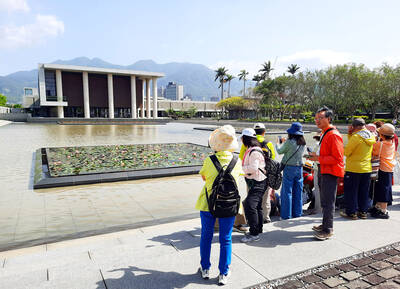
Dull functional structures dominate Taiwan’s cityscapes. But that’s slowly changing, thanks to talented architects and patrons with deep pockets. Since the start of the 21st century, the country has gained several alluring landmark buildings, including the two described below. NUNG CHAN MONASTERY Dharma Drum Mountain (法鼓山, DDM) is one of Taiwan’s most prominent religious organizations. Under the leadership of Buddhist Master Sheng Yen (聖嚴), who died in 2009, it developed into an international Buddhist foundation active in the spiritual, cultural and educational spheres. Since 2005, DDM’s principal base has been its sprawling hillside complex in New Taipei City’s Jinshan District (金山). But